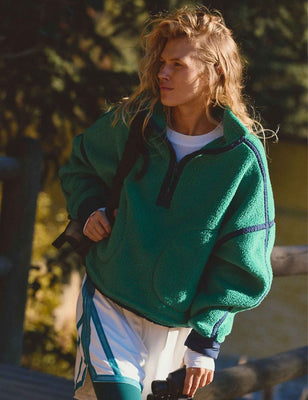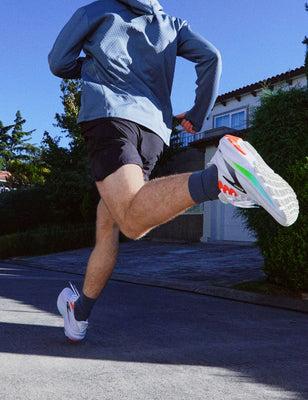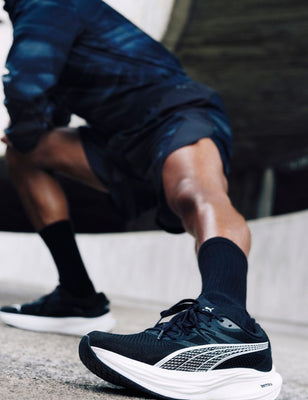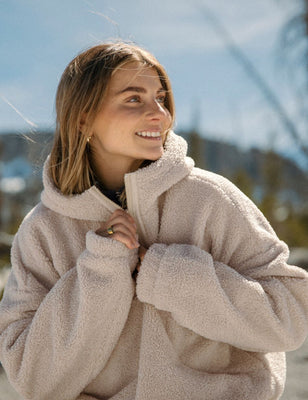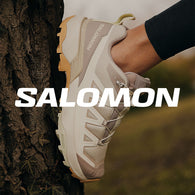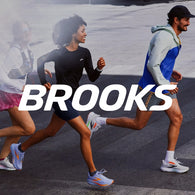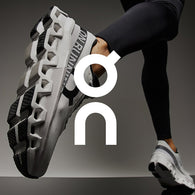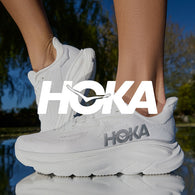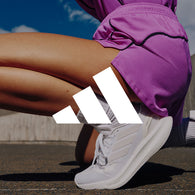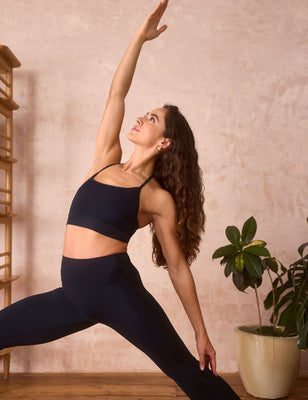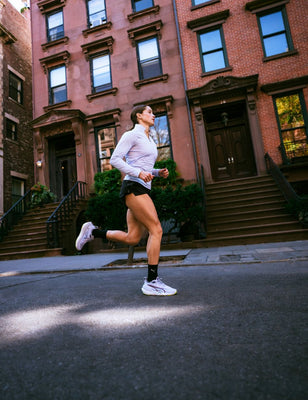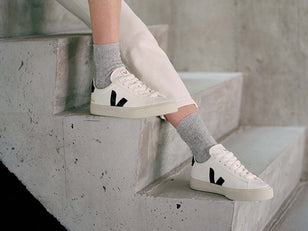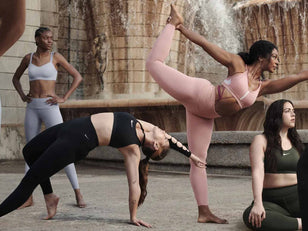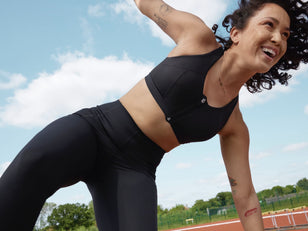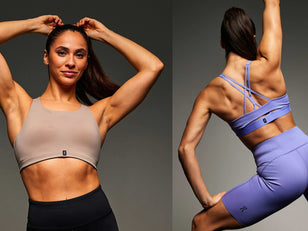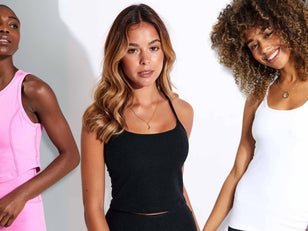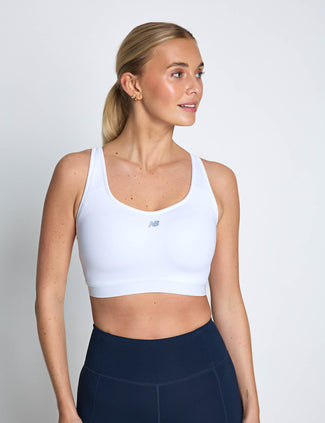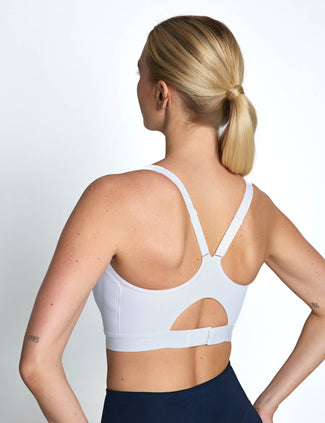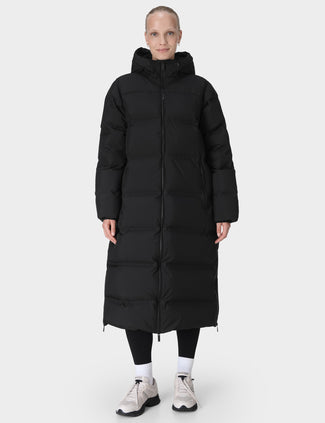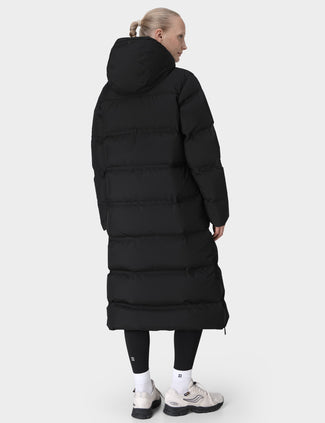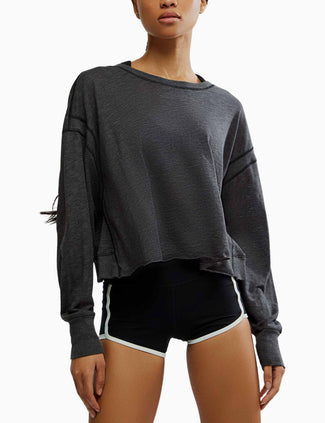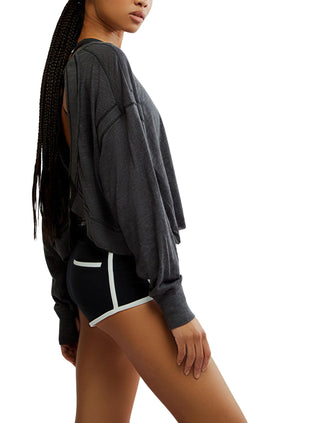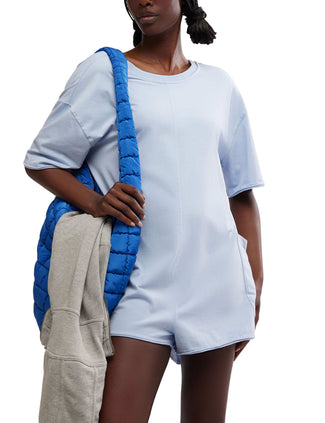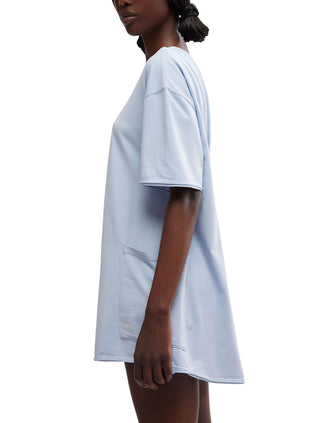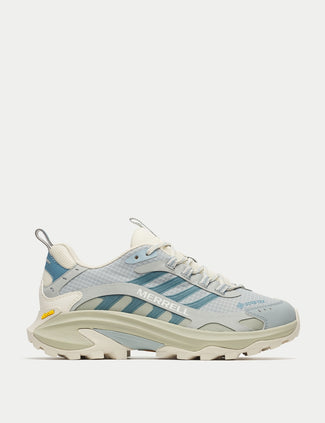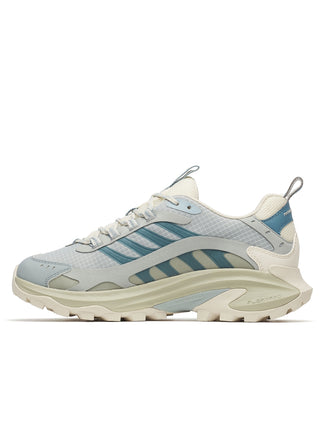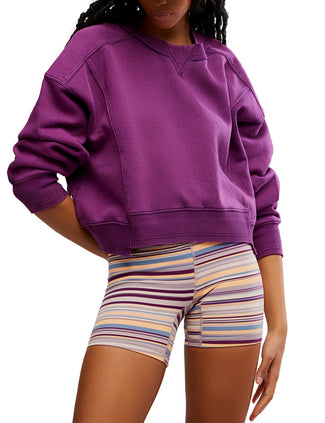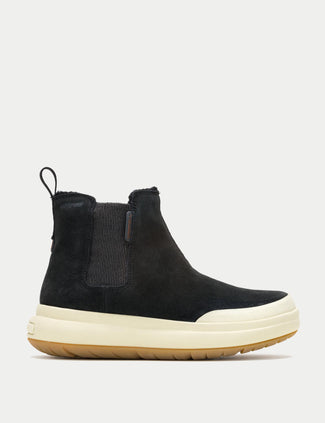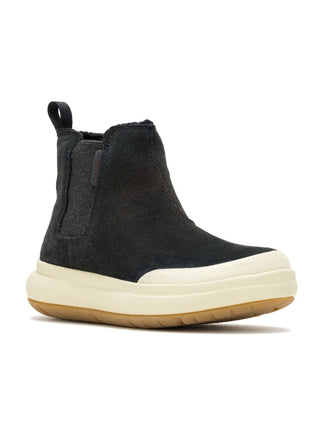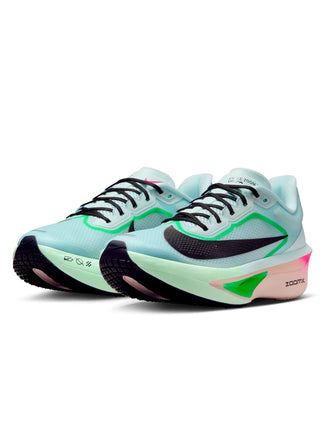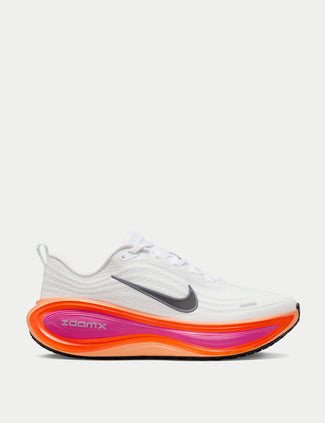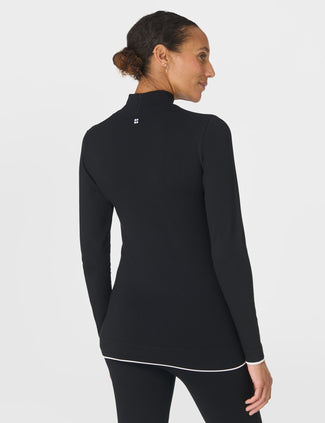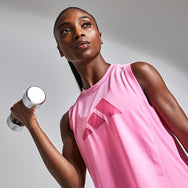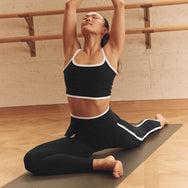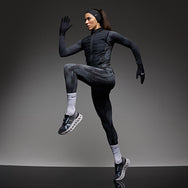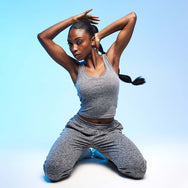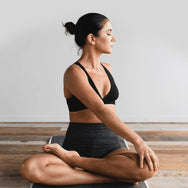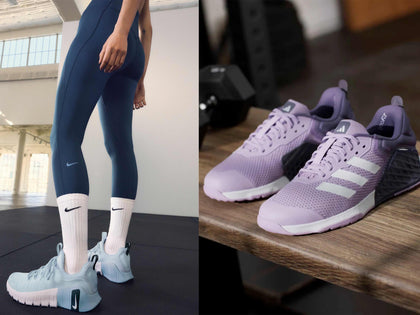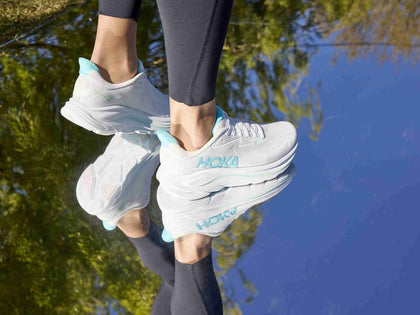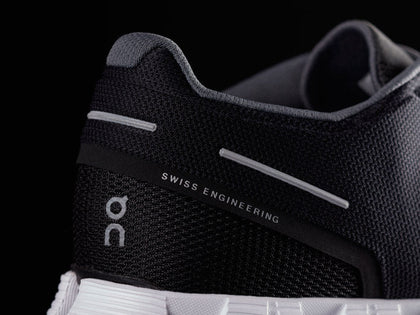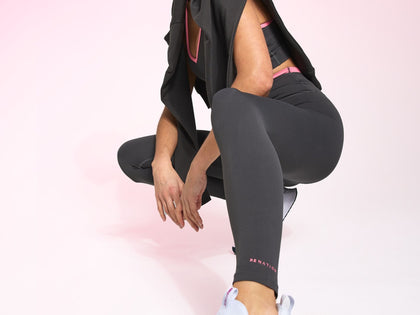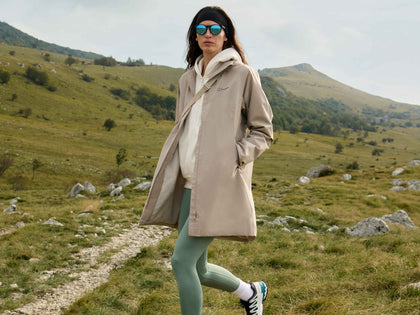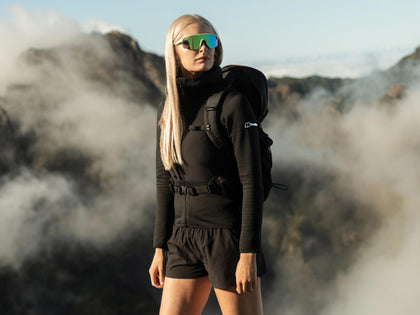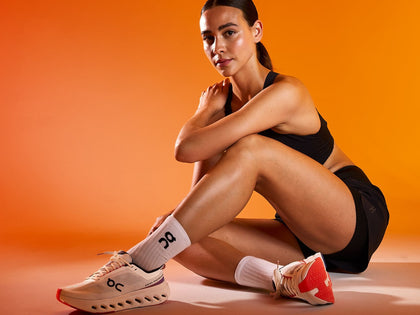Hey there, my name is Michelle and I’m an avid runner. I usually run three times a week, ranging from 5km to 22km per session. For me, running creates a very cathartic headspace; testing my perceived limits, training for a consistent pace, and constantly trying to improve on whatever I’ve done the week before.
In addition to the physical benefits I’ve found through running, I have also noticed that it helps to balance my emotional and psychological equilibrium.
It’s no secret exercise increases serotonin – a chemical and neurotransmitter which contributes to the feeling of happiness and well-being. Basically, running’s my jam. It’s my outlet, my happy place.
This year has kind of been one injury after another, and at times it’s been pretty disappointing. Bouncing from a splash of anaemia (perhaps not strictly an injury), to stubborn plantar fasciitis, and recently a strained hip flexor, I haven’t been able to enjoy the sport that is usually a pillar of my week (and sanity).

So why try Hotpod Yoga?
Frustrated, I decided to channel my energy toward an activity with less physical impact, and one praised for its power to help prevent injury and improve recovery: yoga.
The de-stressing practice has surged into Western popularity for its transformative benefits. Some of the benefits of yoga include improved balance, better flexibility, and greater lung capacity which in-turn delivers more oxygen-rich blood to muscle tissues.
Now, I hope I don’t offend any yogis in the room by saying this, but sometimes I don’t have the patience or focus to remain engaged during yoga sessions.
I get restless and fidgety, dispositions counter to the goal of a yoga practice. So when I started looking for yoga classes to dip my runner’s toe into (sorry for the imagery), it wasn’t long before I got curious about ways I could add a twist.
That’s when I came across Hotpod Yoga.
What is Hotpod Yoga? Is it different from Bikram Yoga?
Hotpod Yoga is a chain of studios offering classes in a heated, enclosed, inflatable purple pod. If you’re picturing a bounce house lined in yoga mats, your imagination is serving you reasonably well.
The intention behind the pods is sound: it’s methodically designed to be an immersive yoga environment, it also works to retain the heat and humidity meaning you sweat more throughout the class.
As someone fairly unfamiliar with yoga, I briefly looked into the difference between hot yoga and another popular heated practice I’d heard about, Bikram yoga.
So what is the difference between hot yoga and Bikram yoga? In short, Bikram yoga is heated to 40C (104F) with at least 40% humidity, where instructors lead classes through a specific sequence of 26 designated postures.
Hot yoga is heated to 37C (98.6F), and can be a little more humid than Bikram, especially when zipped up in a bubble. Hot yoga classes consist of a Vinyasa flow, wherein the poses vary in order and duration.
Yoga can be beneficial for runners
I’ve often heard that yoga is especially good for runners, as it engages groups of muscles rather than just the specific ones runners tend to exert.
The benefits of hot yoga were particularly appealing: hot yoga builds endurance through stretching in the high temperature and it improves breathing and stretching techniques.
In addition to these, there’s a certain sense of accomplishment that comes from a sweat session.
After some light homework on the practice, I signed up for Hotpod’s 7-day introductory offer. The pass offers unlimited access to classes for one week, priced at a modest £15 (roughly $19 USD).
I figured I had nothing to lose, and potentially quite a lot to gain from giving hot yoga a try. Mentally, I spun the intro offer as a sort of 7-day challenge for myself to complete in an effort to stay accountable and stick with it.
What I learned from my Hotpod Yoga experience
As I walked to the Belgravia studio after work on a Monday, I saw a sign on the door reading, “Class in session please don’t slam the door”. Carefully complying, I stepped in and immediately felt as if I’d walked into a cloud of humidity.
The room was comfortably warm and smelled of lemongrass. I took off my shoes by the door, and looked to the centre of the studio to see the big, inflatable morphing pod.
A friendly lady who turned out to be the class instructor signed me in. Noticing I was a first-timer, she directed me to different parts of the studio: changing rooms, lockers, showers, and assured me that the class was suitable for yogis of all abilities.
There was a fridge stocked with water and kombucha, and yoga towels were available for rent or purchase.
I stored my things in a locker, grabbed a mat and climbed into the pod to find an available spot. I managed to tip-toe to a space near the front of the room, right next to one of the heaters (lucky me).
It was a fully-booked class, only adding to the humidity. As soon as all 20 of us were laying down, the instructor zipped up the pod and greeted the class.

8 takeaways from trying Hotpod Yoga:
1. Downward dog is deceptively difficult
Downward dog is the posture where you form a sort of upside down “V” with your body: hands and feet are planted on the mat, hips and tailbone are raised in the air.
Yogis should keep their head and neck in-line with the rest of the spine, but they should not feel locked in place. The biceps tend to come near the ears in this pose, and feet point forward.
As someone with little upper body strength, this posture was very foreign to me. I felt my shoulders and arms heat up as the muscles engaged, and the stretch in my legs made me acutely aware of my tight hamstrings.
Downward dog is one of the fundamental postures of yoga, so it reoccurs in most practices. I often took this pose as a chance to stretch out my hamstrings by “walking out” my feet, alternating pressing one heel to the ground.
2. Chaturanga is meant to build heat and connect the breath
Chaturanga is a pose that follows plank and leads to Downward Dog. Like most of the postures which required even minimal coordination, I struggled with the flow of this one. It’s a point instructors would try to help me correct in almost every class I attended.
The instructor of my fourth Hotpod session had a little booklet of diagrams and postures which he referred to at times throughout the class.
I always marvel at how yoga instructors somehow have class flows practically choreographed and memorised to perfection, so I admit it was refreshing to see that wasn’t always the case.
He explained the purpose of Chaturanga was to connect the breath with movement. The repetition of this posture builds heat in muscles. He suggested that for beginners, a simple way to remember the flow of the postures is, “knees, chest, chin”.
This is how he referred to pose for the remainder of the class. It’s a memory hack I continued to use for the rest of my Hotpod experience.
3. Synchronising “Ujjayi breath” really does take practice
“Ujjayi breath” is a form of breathing that helps restore and energise the body. The technique involves inhaling through the nose, slightly constricting the throat, and filling the diaphragm and lower belly with air before a controlled exhale.
Tightening the throat muscles, creates a sound akin to that of rushing water, which is why this technique is sometimes called “ocean breath”.
Connecting breath to postures is the basis of Vinyasa yoga, as it deepens focus and builds awareness. I found practicing just this technique took a conscious effort, let alone synchronising it to poses.
4. It’s okay to wobble, even instructors do it sometimes
Remember that instructor I mentioned earlier who suggested a modified Chaturanga pose for beginners? Well, he continued to assure the class that yoga instructors are people too, and sometimes even they wobble.
At one point in the class we were holding “Vrikshasana”, or tree pose, a standing pose where one foot is planted on the mat, the other nestled in the thigh or calf of the standing leg, and arms raised straight above the head.
Many people in the class were a bit wobbly in the pose (myself included). He suggested to focus the gaze on something still, but to not worry should we lose balance.
As he was saying this, he ended up wobbling a bit and dropped the pose. He insisted that yoga is not about being perfect, but practice and repetition. So if you do drop a pose, simply take a breath, adjust, and try it again.
5. Booking a morning class did not miraculously make me a morning person
On my second day of this “challenge”, I quickly realised that I needed to be realistic about my schedule and what works for me. By that, I mean… accepting that I’m not a morning person.
As much as I wanted to be the person who woke up early and got a sweat session in before the day started, it just wasn’t meant to be.
I slept through the 6:30 AM class I’d booked in an effort toward a new, zen, yogi version of myself. (PSA addressing my faux pas: don’t ditch classes, if you know you won’t make it, cancel and free up your space for someone else.)
Fortunately the pass offers unlimited access to classes, so I was able to book a class after work at a time I knew I’d be able to attend.
Yoga is a personal practice. I often heard instructors suggest variations of postures through which participants could simplify or advance poses, all the while stressing to only do this, “if it is in your practice”.
This enforced the idea that yoga is a personal journey, and what works for one person may not for another. That also goes for when you practice. Some people may find morning sessions energising, I prefer to use it as a calm practice to end my day.
6. My strained hip flexor got noticeably better
At the start of every session, the instructors asked if anyone in the class had injuries. If so, they would suggest adjustments for certain postures. For the first couple of classes, I wondered whether I should mention my hip flexor – and maybe I should have.
Perhaps a bit stubborn, I decided to first try the flow as led by the instruction, and if I experienced muscle pain, I would ask for a variation.
For the duration of the first two classes, I experienced little-to-no more discomfort than I was already experiencing during a normal day. There were a couple poses which were tough for me to hold: in particular, Navasana, or “boat pose”.
This is a seated pose, where you lean back and raise your legs in either a 90 degree angle (table top) or straight position. The back is straight and chest lifted. Bring your arms in front of you, parallel to the floor and on the outside of your legs.
This is a good core exercise, I also noticed it was demanding (but not painful) on my hip flexor.
In all the classes, I made any leg-engaging posture an opportunity to get a deep stretch into my hip flexor. After the third class, I noticed less discomfort in my hip flexor. By the fourth class, it didn’t bother me at all (and hasn’t bothered me since).
7. Savasana (corpse pose) is actually the best pose
Savasana, or "corpse pose”, is one in which your body is neutral, lying flat with your back on the mat. In this pose you lay with your legs slightly parted, with your arms out to your sides, hands open, palms facing upward.
This is a rejuvenating pose where yogis can focus on “Ujjayi breath”, and let go of stresses or thoughts as the cross the mind. I found it to be very relaxing and meditative.
We practiced this pose in the Hotpod Nurturing Flow class, a session composed of more restorative postures than energising ones. The flow is slow, and the postures are held for longer periods of time to really deepen the practice.
I did one of these classes at the end of a big weekend, and it turned out to be the perfect relaxation outlet. I found that Savasana in this class especially was a very useful pose to really tune in to how my body was feeling.
8. Wearing the right kit is key
This probably goes without saying: it gets very sweaty in the pod. That's why it's super important to wear kit that can take the heat and let your body move and breathe throughout the class.
In other words, be sure to have specific yoga clothes that are made to perform under these conditions. Over the 7 days of this "challenge", I wore a mix of crop tops and shorts, as well as sports bras and high-waisted leggings.
Personally, I overheat very easily. I almost always run in shorts (even in the winter) because I get so warm during exercise. So with full candour, I was a little unsure whether leggings would work for me in a hot yoga class.
To my delight, my yoga leggings were just right; I didn't overheat, and they moved well through all the postures. For the rest of the week, I enjoyed piecing together outfits with bits of my activewear closet I don't often reach for if I have a cardio exercise planned - it was great!
Check out our hot yoga must haves: Women's Yoga Shorts | Men's Yoga Shorts

Summary
After 7 classes at HotPod Yoga, I felt a bit like I’d been on a week-long detox. After my 7-day trial, found myself being able to run pain-free with my hip flexor, and I truly credit some of this recovery to my yoga practice.
I enjoyed sweating out the stresses of my day, and noticing any improvements in my poses or techniques. Of course, I was by no means proficient after one week of hot yoga.
But, I can see why so many enjoy it; it’s a great way to practice physical self-awareness, muscular isolation and control, and challenge oneself in a way that’s different from a high-intensity exercise.
So while I wouldn’t consider myself a convert, I can definitely see myself rolling out a mat from time to time. And at £15 for a taster offer, I’d recommend anyone to give it a try!
Up Next
Common yoga mistakes you might be making >
The complete guide to Alo Yoga leggings >







